Understanding the methodologies and philosophies of influential theatre practitioners is essential for students studying Drama at GCSE and A-Level. When I was studying drama at university and later training as a Drama Teacher, I would have loved to have had a comprehensive guide to key drama practitioners all in one place. So here it is!
This guide delves into the most prominent figures referenced across major exam boards, providing detailed insights into their contributions and relevance to contemporary theatre education. This is the first post in a series where we delve deeper into the practitioners one at a time, but for now, here’s a list for reference.
🔹 Konstantin Stanislavski (1863–1938)

By Bundesarchiv, Bild 183-18073-0003 / CC-BY-SA 3.0, CC BY-SA 3.0 de, https://commons.wikimedia.org/w/index.php?curid=6512510
Focus: Realism, emotional truth, actor’s inner life
Key Concepts: The System, Given Circumstances, Magic If, Emotional Memory
Why Study Him:
Stanislavski revolutionised acting by introducing a systematic approach that emphasised psychological realism and emotional authenticity. His techniques encourage actors to explore their character’s motivations and backstory, fostering a deeper connection to the role.
Classroom Application:
- Character development exercises focusing on objectives and super-objectives
- Improvisations based on Given Circumstances
- Emotional memory recall activities
Exam Board Relevance:
- AQA: Component 3 – Making Theatre
- Edexcel: Component 3 – Theatre Makers in Practice
- OCR: Component 3 – Practitioners in Practice
- Eduqas: Component 1 – Theatre Workshop
🔹 Bertolt Brecht (1898–1956)
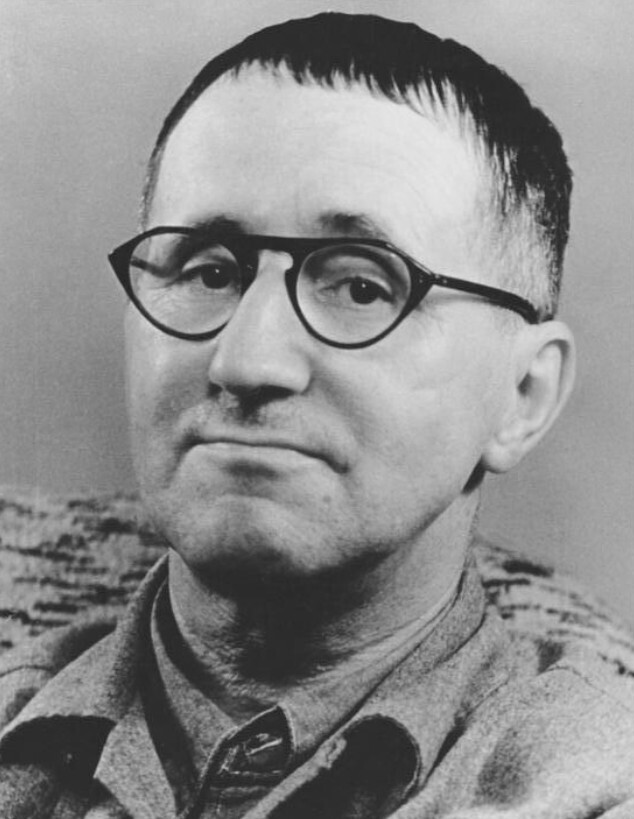
By Bundesarchiv, Bild 183-W0409-300 / Kolbe, Jörg / CC-BY-SA 3.0, CC BY-SA 3.0 de, https://commons.wikimedia.org/w/index.php?curid=5371156
Focus: Epic Theatre, political engagement, audience detachment
Key Concepts: Verfremdungseffekt (Alienation Effect), Gestus, Narration, Direct Address
Why Study Him:
Brecht aimed to provoke critical thinking rather than emotional immersion. His techniques break the fourth wall, reminding the audience of the artificiality of theatre to encourage reflection on societal issues.
Classroom Application:
- Creating scenes with direct audience address
- Using placards and projections to convey messages
- Exploring Gestus to reveal social relationships
Exam Board Relevance: - AQA: Component 3 – Making Theatre
- Edexcel: Component 3 – Theatre Makers in Practice
- OCR: Component 3 – Practitioners in Practice
- Eduqas: Component 1 – Theatre Workshop
🔹 Antonin Artaud (1896–1948)
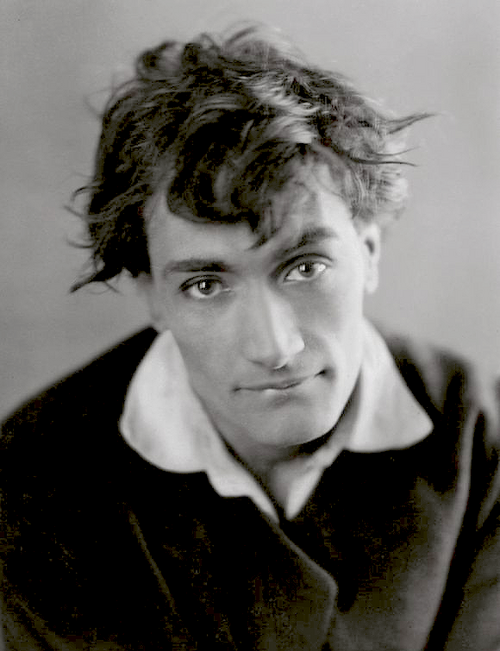
By Unknown author – https://www.operanationaldurhin.eu/fr/spectacles/saison-2018-2019, Public Domain, https://commons.wikimedia.org/w/index.php?curid=140789602
Focus: Theatre of Cruelty, sensory experience, subconscious exploration
Key Concepts: Non-verbal communication, shocking imagery, ritualistic performance
Why Study Him:
Artaud’s Theatre of Cruelty sought to disrupt the audience’s complacency through intense sensory experiences, aiming to tap into the subconscious mind. It’s important to note that his ideas were often theoretical and experimental, and fully realising his vision in a practical classroom setting can be challenging. However, exploring his concepts can inspire students to think beyond traditional theatrical conventions.
Classroom Application:
- Devising performances using soundscapes and lighting to create atmosphere
- Movement exercises focusing on primal expression
- Exploring themes of chaos and order through abstract performance
Exam Board Relevance: - AQA: Component 3 – Making Theatre
- Edexcel: Component 3 – Theatre Makers in Practice
- OCR: Component 3 – Practitioners in Practice
- Eduqas: Component 1 – Theatre Workshop
🔹 Jerzy Grotowski )1933-1999)

By Zbigniew Kresowaty – zbiory prywatne, Attribution, https://commons.wikimedia.org/w/index.php?curid=13499513
Focus: Poor Theatre, actor-audience relationship, physicality
Key Concepts: Total Act*, Via Negativa, Actor Training
Why Study Him:
Grotowski emphasised the actor’s physical and vocal capabilities, advocating for a minimalist approach that stripped away theatrical excess to focus on the performer-audience connection.
Classroom Application:
- Physical and vocal training exercises
- Exploring spatial relationships and proximity
- Devising performances with minimal props and sets
Exam Board Relevance: - AQA: Component 3 – Making Theatre
- Edexcel: Component 3 – Theatre Makers in Practice
- OCR: Component 3 – Practitioners in Practice
- Eduqas: Component 1 – Theatre Workshop
*Grotowski’s work on “Total Act” is closely associated with his earlier phase. Later, his work evolved towards “Theatre of Sources” and “Paratheatre.” While “Total Act” is a relevant concept for students, more advanced students may want to study this evolution of his work too.
🔹 Frantic Assembly (Founded 1994)
Focus: Physical Theatre, collaborative devising, contemporary storytelling
Key Concepts: Chair Duets, Building Blocks, Physical Transitions
Why Study Them:
Frantic Assembly (co-founders, Scott Graham and Steven Hoggett) combines movement and text to create dynamic performances, making their techniques accessible and engaging for students exploring physical theatre.
Classroom Application:
- Learning and creating Chair Duets
- Developing sequences using the Building Blocks method
- Integrating movement with spoken text
Exam Board Relevance: - AQA: Component 3 – Making Theatre
- Edexcel: Component 3 – Theatre Makers in Practice
- OCR: Component 3 – Practitioners in Practice
- Eduqas: Component 1 – Theatre Workshop
🔹 Steven Berkoff (b. 1937)

By The Humm Collection – https://philipphumm.art/the-last-faust-starring-steven-berkoff-official-trailer/, CC BY-SA 4.0, https://commons.wikimedia.org/w/index.php?curid=109556842
Focus: Total Theatre, heightened physicality, stylised performance
Key Concepts: Exaggerated movement, choral speaking, minimalistic staging
Why Study Him:
Berkoff’s work challenges conventional realism, encouraging performers to explore exaggerated physical and vocal expression to convey themes and narratives.
Classroom Application:
- Exercises in stylised movement and gesture
- Choral speaking and ensemble work
- Devising scenes with minimal props and sets
Exam Board Relevance: - AQA: Component 3 – Making Theatre
- Edexcel: Component 3 – Theatre Makers in Practice
- OCR: Component 3 – Practitioners in Practice
- Eduqas: Component 1 – Theatre Workshop
🔹 Jacques Lecoq (1921–1999)
Focus: Physical Theatre, mime, mask work, movement analysis
Key Concepts: Neutral Mask, Seven Levels of Tension, Le Jeu (The Play)
Why Study Him:
Lecoq’s pedagogy focuses on the physicality of performance, training actors to express character and emotion through movement and gesture.
Classroom Application:
- Neutral Mask exercises to explore physical neutrality
- Practising the Seven Levels of Tension
- Devising performances using mime and physical storytelling
Exam Board Relevance: - AQA: Component 3 – Making Theatre
- Edexcel: Component 3 – Theatre Makers in Practice
- OCR: Component 3 – Practitioners in Practice
- Eduqas: Component 1 – Theatre Workshop
🔹 Augusto Boal (1931–2009)

By Jonathan McIntosh – File: Augusto Boal nyc3.jpg, CC BY-SA 3.0, https://commons.wikimedia.org/w/index.php?curid=81925545
Focus: Theatre of the Oppressed, audience participation, social change
Key Concepts: Forum Theatre, Invisible Theatre, Legislative Theatre
Why Study Him:
Boal’s techniques empower audiences to engage with and influence the performance, promoting dialogue and reflection on social issues.
Classroom Application:
- Creating Forum Theatre pieces addressing contemporary issues
- Role-playing exercises to explore multiple perspectives
- Devising interactive performances involving audience decision-making
Exam Board Relevance: - AQA: Component 3 – Making Theatre
- Edexcel: Component 3 – Theatre Makers in Practice
- OCR: Component 3 – Practitioners in Practice
- Eduqas: Component 1 – Theatre Workshop
🔹 Katie Mitchell (b. 1964)

By Kleon3 – Own work, CC BY-SA 4.0, https://commons.wikimedia.org/w/index.php?curid=163370290
Focus: Multimedia integration, feminist perspectives, innovative staging
Key Concepts: Live Camera Work, Layered Narratives, Naturalism
Why Study Her:
Mitchell’s work pushes the boundaries of traditional theatre by incorporating technology and exploring complex narratives, offering students a contemporary perspective on performance.
Classroom Application:
- Devising scenes using multimedia elements
- Exploring feminist themes through performance
- Analysing the impact of technology on storytelling
Exam Board Relevance: - AQA: Component 3 – Making Theatre
- Edexcel: Component 3 – Theatre Makers in Practice
- OCR: Component 3 – Practitioners in Practice
- Eduqas: Component 1 – Theatre Workshop
🔹 Kneehigh Theatre
Focus: Multi-disciplinary storytelling, physical theatre, ensemble collaboration
Key Concepts: Integration of live music, puppetry, and movement; reimagining classic tales; site-specific performances
Why Study Them:
Founded in 1980 by Mike Shepherd (Artistic Director) in Cornwall, Kneehigh Theatre became renowned for its innovative and visually captivating productions. Their work often blends various theatrical elements to create immersive storytelling experiences. Notable productions include Tristan & Yseult, The Red Shoes, and Brief Encounter.
Classroom Application:
- Devising performances that incorporate multiple art forms
- Exploring adaptations of myths and legends
- Creating site-specific or immersive theatre pieces
Exam Board Relevance: - AQA: Recognised as a prescribed practitioner for Components 2 and 3
- Edexcel: Included in the list of recommended practitioners for devising and performance work
- Eduqas: Acknowledged as an influential contemporary theatre company suitable for study
🔹 Complicité
Focus: Physical theatre, multimedia, ensemble storytelling
Key Concepts: Collaboration, visual storytelling, integration of text and image
Why Study Them:
Founded by Simon McBurney, Complicité blends physical movement, spoken word, and multimedia to create layered, imaginative performances. Their work often explores memory, identity, and language.
Classroom Application:
- Devising ensemble-based physical theatre
- Exploring text through visual metaphor and movement
- Using projection, sound, and design as storytelling tools
Exam Board Relevance: - AQA, OCR, Edexcel, Eduqas (relevant for devised and practitioner-led components)
🔹 Punchdrunk
Focus: Immersive theatre, audience agency, site-specific performance
Key Concepts: Promenade performance, sensory environment, individual experience
Why Study Them:
Punchdrunk transforms entire buildings into performance spaces where audience members roam freely, piecing together narrative threads in their own way. Their work redefines the audience-performer relationship.
Classroom Application:
- Designing immersive and site-specific pieces
- Exploring fragmented narrative structures
- Creating atmospheric spaces with lighting, sound, and design
Exam Board Relevance: - Particularly valuable for devised performance units and technical design discussion
🔹 DV8 Physical Theatre
Focus: Physical storytelling, verbatim theatre, social themes
Key Concepts: Movement-based dialogue, political themes, challenging norms
Why Study Them:
Led by Lloyd Newson, DV8’s work blends movement and real-life interviews to explore identity, sexuality, and social issues. It’s bold, physical, and unapologetically relevant.
Classroom Application:
- Creating physical responses to real-world issues
- Verbatim techniques with a physical twist
- Exploring movement and monologue integration
Exam Board Relevance: - Suitable for devised work, especially on social or political themes
Conclusion
These practitioners have significantly influenced modern theatre, each bringing unique methodologies and philosophies that continue to shape performance today. By studying their work, students gain a deeper understanding of theatrical techniques and the diverse approaches to storytelling on stage.
Here’s a FREE timeline showing the most prolific work by the practitioners and a simplified key to their most important contribution area. This is intended to be a broad brushstroke to help students understand the evolution of theatre and the practitioners who drove it. However, as with any simplification of complex artistic histories, there are nuances and potential for further discussion regarding the categorisation and the precise start and end points of their most influential periods and I invite you to have these discussions with your students.
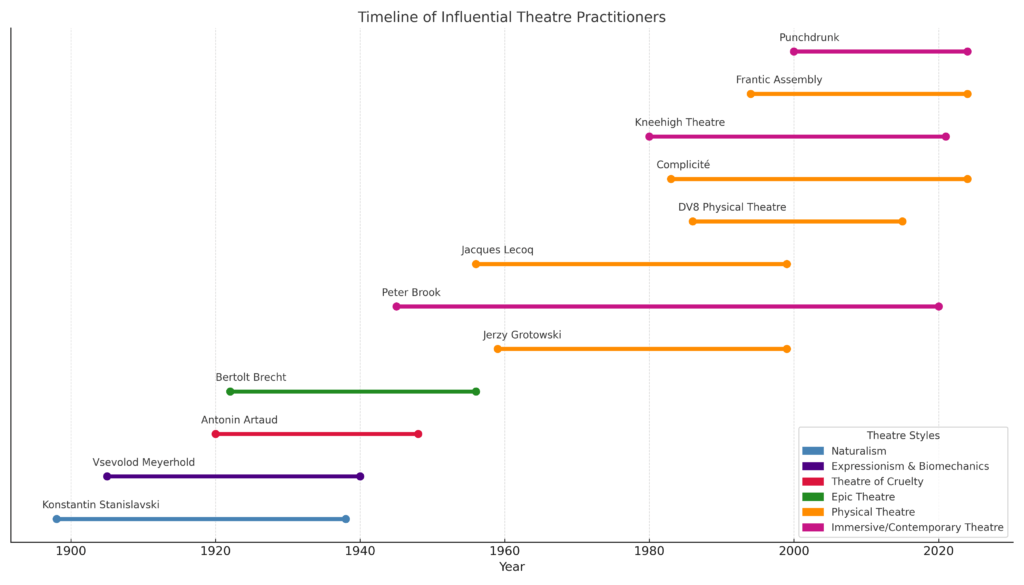
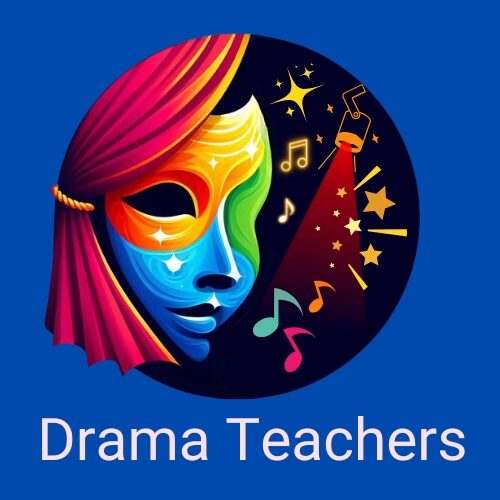
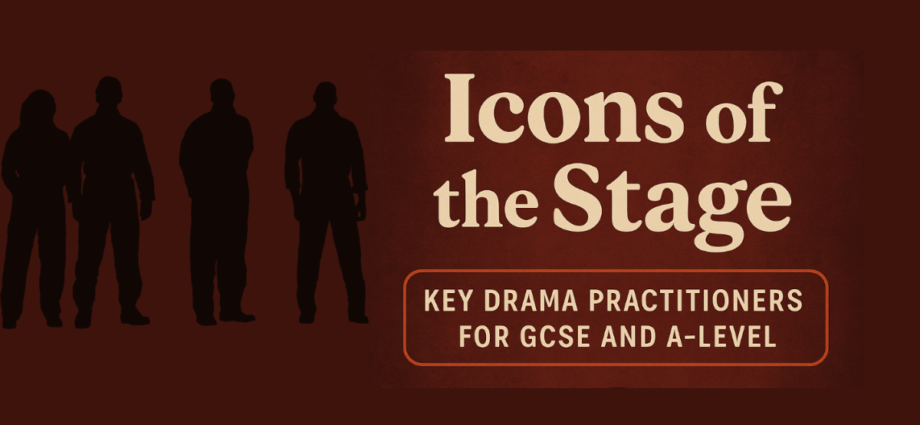

This is such a valuable resource—wish I’d had something like this when I first started exploring theatre practitioners! It’s incredibly helpful to see how each one ties directly into the exam board components. I’m especially interested in how physical theatre practitioners like Frantic Assembly and DV8 can be used in devised pieces. Do you have a go-to practitioner for helping students break out of their comfort zone creatively?
Hi Vlad. Thanks for reading the article and I’m so glad that you have found it useful. It was fun to research and put together and although there is no way we can study all of the practitioners, we can at least open our student’s eyes to the possibilities and legacy they have left. To answer your question, I have done workshops with Frantic Assembly as they have a good outreach programme for Drama Teachers especially helping secondary students so I find them very approachable and the students love their workshops. I personally also love the DV8 videos since I also teach dance and love their approach to drama/dance productions. I also like the work of Kneehigh because they use different styles in their work which I think means that all students can find something which they can relate to be that music, puppetry or mime!
Gail, your blog is impressive and beautiful. Looks like you have had a great journey since being a “goblin” at such a young age. 40 years of drama and teaching certainly provide you with much experience and knowledge to share with the world via your blog. Plus, you also have that dance experience, including teaching, yet another set of knowledge you can use in your affiliate marketing.. The “Hub” is a cool part of your site and seems to offer a lot for your visitors, and you are offering newsletters and downloads that will certainly attract interest. Best wishes, Shirley
Dear Shirley. Thank you for your very kind comments on this article and the site as a whole. It really means a lot to know that you think I am offering value to my audience. I certainly have a passion for both drama and dance as they have been my life, as you say. And that little goblin is still in there somewhere! I would love the site to be a go-to place for all people interested in the performing arts, and I have lots and lots of new information planned over the coming months, so please do feel free to drop in. And if you’d like to know more about my other site, please check out http://www.thecreativechoice.org as I think you’d like this too. All the best, and thanks again. Gail